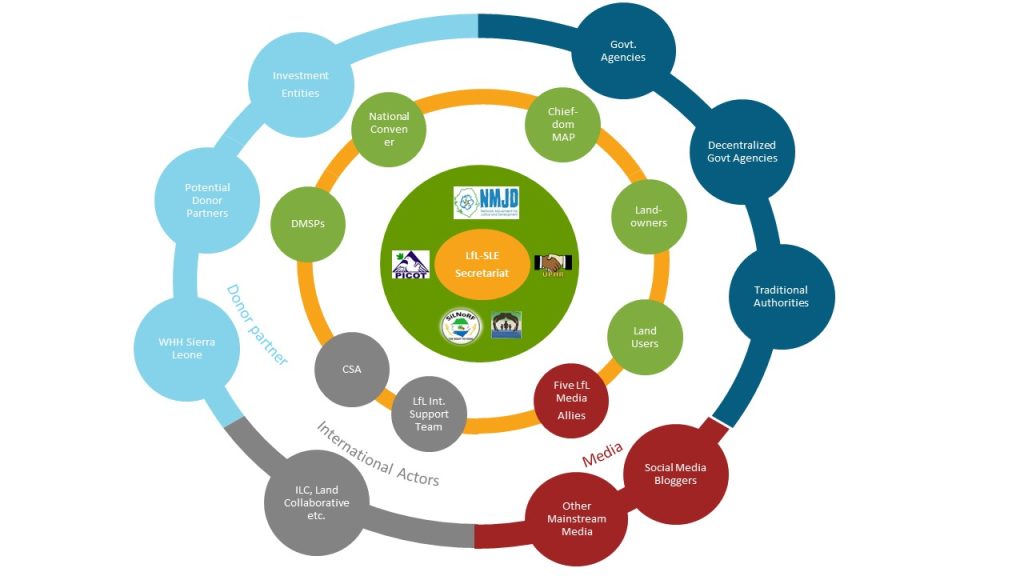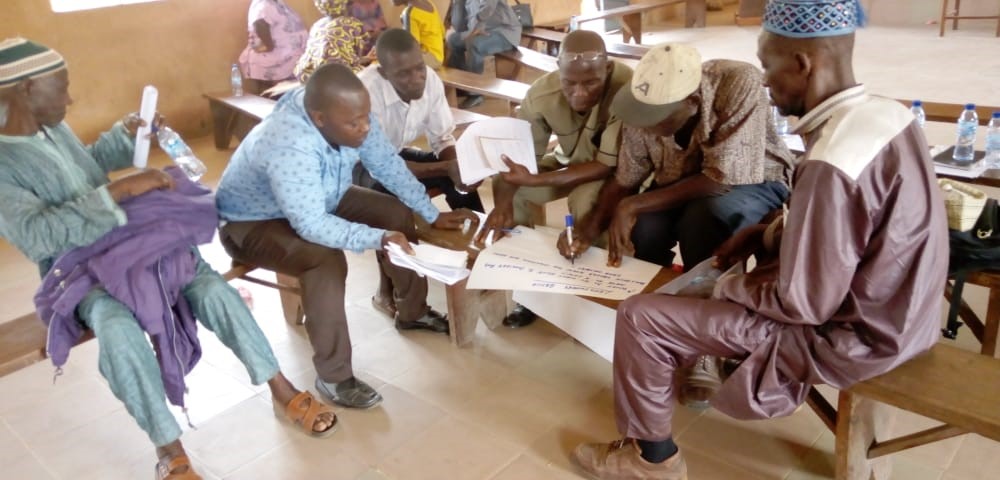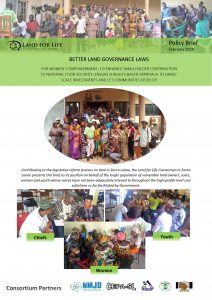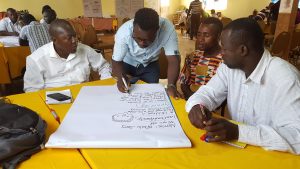SIERRA LEONE
Land for Life in Sierra Leone
In Sierra Leone, the Land for Life initiative has a Secretariat that coordinates all processes at national and international levels and represents Land for Life in relevant policy processes. It is working in close collaboration with different ministries, departments, and agencies (MDA’s), other national and international organizations to achieve the overall goal of contributing to the formulation and implementation of responsible land and investment policies. Initially the initiative was rolled out by a Consortium of five civil society organizations across five districts of the country; since September 2020, the following four partners are taking the initiative forward:
![]() Pujehun District: Partners Initiative for Conflict Transformation (PICOT)
Pujehun District: Partners Initiative for Conflict Transformation (PICOT)
![]() Kenema District: Network Movement for Justice and Development (NMJD), Lead consortium, hosts Secretariat
Kenema District: Network Movement for Justice and Development (NMJD), Lead consortium, hosts Secretariat
![]() Port-Loko District: United for the Protection of Human Rights (UPHR)
Port-Loko District: United for the Protection of Human Rights (UPHR)
![]() Tonkolili District: Forum for Human Rights and Development (FOHRD)
Tonkolili District: Forum for Human Rights and Development (FOHRD)
These partners work at district, chiefdom, and community levels. The different engagements range from communities to multinational companies.
Currently, the Land for Life Consortium is actively engaged in at least 40 communities, across 12 chiefdoms in the four districts of the country. The Consortium partners have started to also establish community-level land committees. Their core mandate is to facilitate engagements between investors and landowners in order to address conflicts and promote peaceful co-existence. Jointly with other CSOs, in each district multi-stakeholder platforms are encouraged and strengthened. Key land challenges experienced by community stakeholders are then discussed between all relevant stakeholders and, if required, scaled to the chiefdom, the district, or the national level. At the same time, stakeholders at a decentralized level are informed and consulted about land-related policy-reforms at national level.
In all these engagements a key challenge is the existence of resistive traditional barriers which impede women’s inclusion and recognition of youth in decision-making. Further challenges are already erupted conflicts related to land-based investments as well as cases of reported corruption characterized by collusion between investors and traditional chiefs.
Overall MAP Structure


“We respect the views of the high-profile personalities already consulted, but we also want the proposed laws to represent the views and aspirations of the affected land-owners, users, women, youth and people with disabilities who are in the majority.”
Land for Life Consortium, Policy Brief, February 2020
The Collaboration Framework of the Land for Life-initiative in Sierra Leone
In the new Medium-Term National Development Plan (2019-2023), the government identified as one of its strategic objectives ensuring effective land management and administration by promoting equitable access to and control over land. To achieve this, an autonomous and decentralized National Land Commission is proposed, a National Cadastral Records Management System shall be introduced, and a National Spatial Development Plan and Strategy developed.
With the support of the FAO, the government drafted a standardized Agricultural Investment Approval Process (AIAP). Many development partners including the Welthungerhilfe and national civil society partners (as NMJD) have been involved. A corresponding multi-actor working group on responsible agricultural investment (RAI) has been initiated at national level. In early 2019, the Land for Life Consortium has partnered with the FAO to conduct awareness building and consultation processes on AIAP at the sub-national level. However, as of April 2020, the AIAP is not legally binding.
The progressive National Land Policy (NLP), which was launched in 2017 integrating many key provisions of the VGGT, remains to be implemented and transformed into law. Starting from November 2019, two major legal reform projects – the draft National Land Commission and Customary Land Rights Bills – have been launched. Land for Life engaged with the Ministry of Lands, Housing and Country Planning, the FAO, and other partners to consult local communities on those reform projects, which are both considered key to implement the 2017 NLP.
The Land for Life Consortium will continue to push for the implementation of the NLP whilst equally insisting on sufficient time and resources to facilitate an inclusive and participatory legal reform process.
Through FAO’s support to the implementation of the VGGT in Sierra Leone between 2014-19, platforms for multi-stakeholder dialogue engagements on land governance have been established. Even though FAO’s VGGT-project ended in 2019, the established practice of multi-actor consultations is maintained and actively promoted inter alia by the Ministry of Lands, Housing and Country Planning that is hosting the National Land Policy Steering Committee. Consequently, for Land for Life, there was no need to establish an additional multi-actor dialogue process on land governance. The intervention rather focuses on strengthening the inclusions of underrepresented stakeholders in the existing MSPs (women, youth and CSOs), and replicating this intervention model at sub-national level (again with a strong focus for balanced among all interest groups).
Land Rights in Sierra Leone
With its National Agricultural Transformation Plan 2023, the Sierra Leonean government which came into power in April 2018 established the aim of achieving food sufficiency by 2023. In particular, foreign direct investments in agriculture are considered as a key ingredient to accelerate production and to reduce the country’s dependency on imports. Importation of the most important staple food (rice) shall be cut down by 50% within the next three years. In commitment to this goal the government has increased the budgetary allocation to the Ministry of Agriculture from 3% in 2019 to 6% by 2020.
Over the past years, there has been a considerable influx of financially powerful foreign investors into the country: in particular in the mining sector and in the form of large-scale land-based agricultural concessions. Many of these investments have been very controversial and, in some cases, conflicts over land in investment areas resulted in violence.
Land – which is the fundamental resource for any investment in agriculture – is not effectively governed. Sierra Leone’s governance arrangement is characterized by a “dual land administration system”. The freehold tenure system governed by General Law (English Common Law and Statutory Law) in the Western Area, including the capital Freetown, which allows land sales and leases; and the customary tenure system governed by customary law, and partly general law, in the Provinces.

Capital: Freetown
Population: 7.8 Mio.
Country area: 72,180.0 km²
Agricultural area: 54,7 %
(Source: World Bank, 2019)


